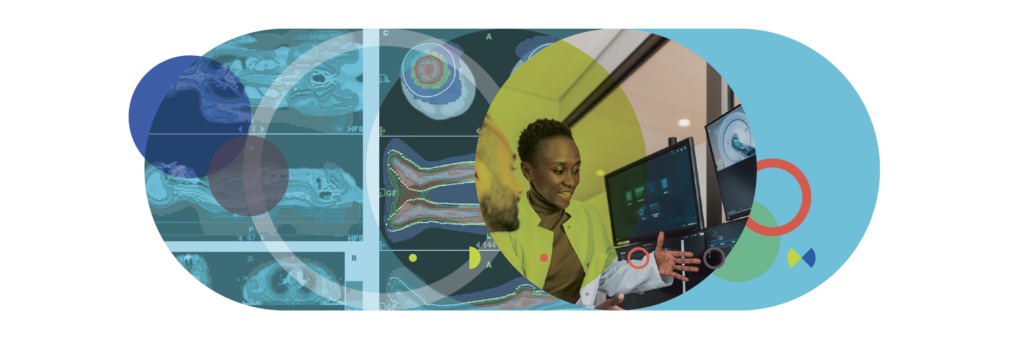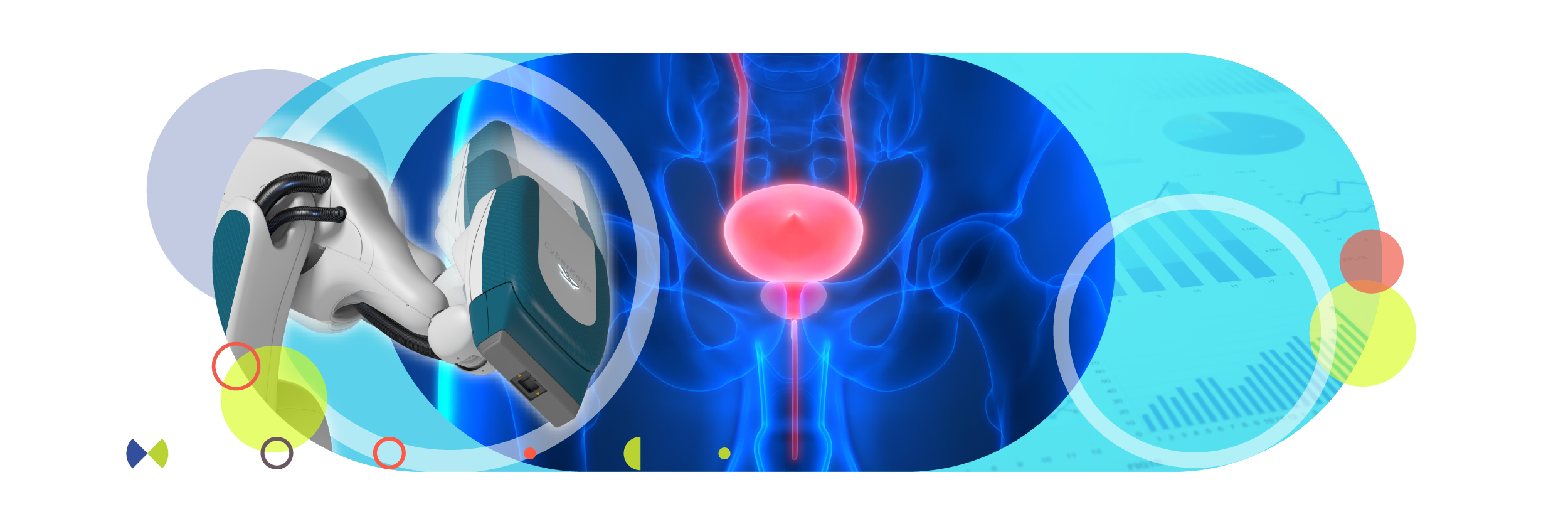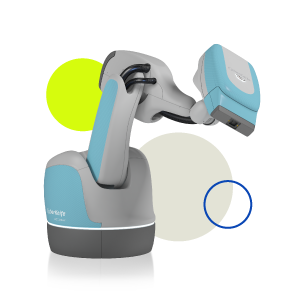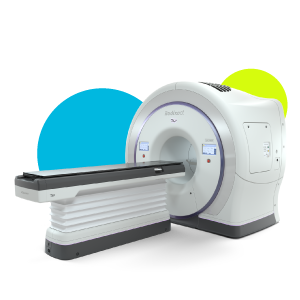It’s blood cancer awareness month! In this blog article, we are looking at the challenges in total body irradiation (TBI) and how the TomoTherapy® platform is making a positive difference for radiotherapy centres and their patients. But first here are 3 facts about blood cancer:
- The 3 main types of blood cancer are leukaemia, lymphoma and myeloma[1]
- In 2020, there were 474,519 new cases of leukaemia worldwide, making it the 13th most common cancer[2]
- Approximately every 3 minutes, one person in the United States is diagnosed with leukaemia, lymphoma or myeloma[3]
When is Total Body Irradiation Used?
Treating leukaemia and lymphoma with transplantation remains one of the most successful forms of therapy[4]. TBI is an effective component of conditioning for hematopoietic stem cell transplant. However, there are many challenges to deliver TBI:
What are the Challenges?
Patient Positioning
For the majority of patients receiving TBI, the use of parallel opposed fields at an extended source-to-surface distance (SSD) is still the most commonly used technique. As a result, patient set-up often needs manual adjustment between treatment fields, increasing treatment time. Patients may be lying, sitting, or standing in hard-to-maintain positions for an hour or more, causing discomfort.
Organ Shielding and Tissue Compensators
TBI requires special attention from planning to delivery as it is critical to ensure a homogeneous dose while helping minimize dose to organs at risk to reduce side effects. Evidently, conventional linear accelerators typically treat patients with anterior/posterior fields or lateral fields at extended SSD. As a result, they often require compensators, lung blocks, and spoilers to achieve a homogenous dose distribution.
Generally, dose variations within 10% of the prescribed midplane are considered acceptable for TBI treatments [5]. However, conventional techniques can be cumbersome and not consistently accurate. Patient anatomy can cause dose variability and tissue compensators may reduce dose beyond expectations, leading to an increased risk of recurrence[6].
Image Verification and Quality Assurance
To be confident that you are delivering the planned treatment, you need some form of verification. While some centres use diodes to measure dose in the body, it is difficult to ensure accuracy, especially in patients who only have a single fraction. Consequently, image verification is difficult to perform for extended field techniques.
Workload
Delivery time is long, taking up to 1 hour and more depending on the technique. This time is doubled for patients requiring 2 fractions in one day, making it difficult to treat all your scheduled patients in the same day. This can lead to extending working hours on the treatment machine or moving patients to other treatment machines. TBI is resource intensive – it is not a technique that is performed all the time. Therefore, experienced staff must be involved to ensure treatment delivery is delivered as planned.
More recently volumetric arc therapy is being used for TBI but can come at the cost of many isocentres (3-9), multiple arcs, and long treatment times that can increase planning and delivery complexity [7,8].
How Does the TomoTherapy Platform Enable You to Overcome Challenges in Total Body Irradiation?
Many centres have successfully introduced the TomoTherapy Platforms to make TBI accessible to more patients including the Radixact® System, the latest generation TomoTherapy System.
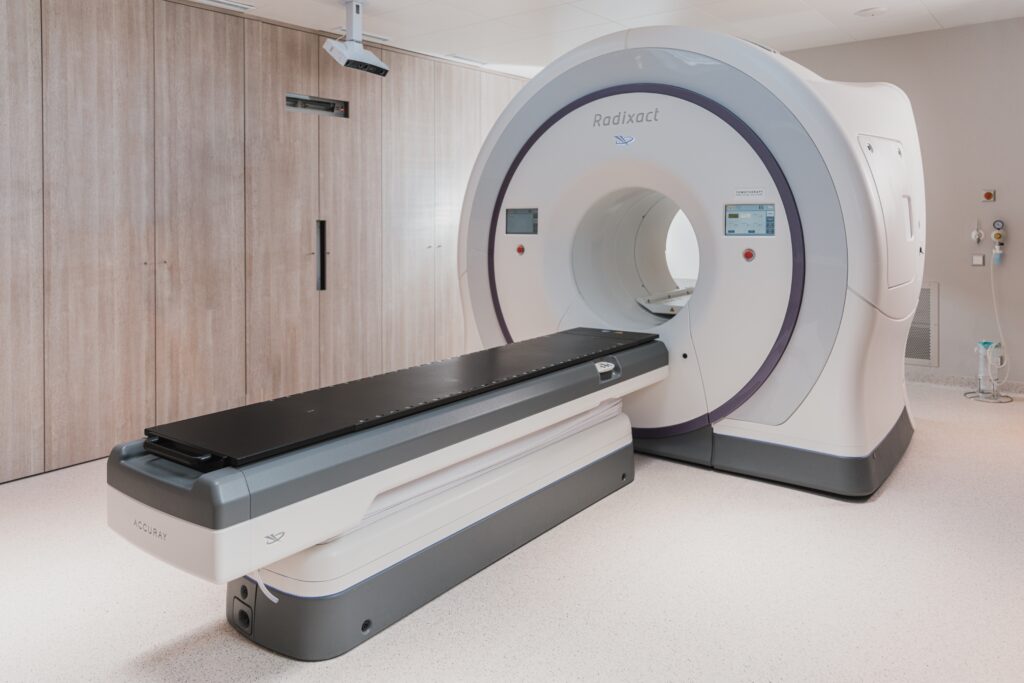
Patient Comfort and Shorter Treatment Times
The continuous 360o delivery allows treatment to be delivered more quickly and as such can be delivered in less than an hour, with some studies reporting treatment times of 35 minutes[6,9]. A shorter treatment time and lying supine allow patients to be more comfortable, maintaining their treatment position more easily.
Highly Conformal and Homogeneous Dose – No Need for Compensators or Additional Shielding
Higher conformality can be achieved with the Radixact and TomoTherapy Systems with its binary multi-leaf collimator and flattening filter-free fan beam. This allows for steep dose gradients between target volumes and tissues at risk without the need for external compensators or lung blocks. The TomoTherapy System can treat 135 cm of the body by continuous 360o helical delivery with simultaneous couch movement through the gantry. This technique reduces the need for field junctions, minimizing dose gaps and overlap. Highly conformal lung sparing can be achieved with mean lung doses of no more than 10 Gy[9]. Furthermore, a study reported central lung doses of <6 Gy while adjacent organs still received the prescribed dose[10].
MVCT/kVCT Image Verification
Helical MVCT or kVCT 3D image verification allows you to visualize patient anatomy, enabling you to make corrections in patient set-up to deliver treatment confidently.
What About Patients Who are Taller than 135 cm?
For patients over 135 cm, adequate dose coverage can be achieved by using only 1 junction in the thigh region. Many centres have deployed this technique where a junction in the thigh area is divided into several target volumes. This creates a linear dose gradient to minimize dose variations from any possible set-up errors.[11]
Learn the advantages of treating Total Body Irradiation on the TomoTherapy System – take a look at our clinical webinar.
Indo-American Hospital Experience with Helical TomoTherapy for Total Body Irradiation[12]
The Indo-American Hospital’s experience with TBI started when they installed the TomoTherapy System in September 2017, treating their first patient with TBI in November 2017. The most common diagnosis was acute lymphblastic leukemia followed by aplastic anaemia. The dose delivered ranged from 2-12 Gy in 1 – 6 fractions over 1-3 days with a minimum gap of 6-8 hours between fractions.
Patients were immobilized supine with a body-vac and a 3-clamp open face mask. Patients were scanned from vertex to toe. For those longer than 135 cm, two scans were acquired. Out of 50 patients treated, 16% were planned with a single scan.
Planning target volumes (PTV) were created with an inner margin of 2 mm and outer margins of 10 and 15 mm around the body contour. Lungs were contoured with an inner margin of 5 and 10 mm to account for respiration. The median 95% PTV coverage was 96%, and the median dose homogeneity index was 1.28. The median beam on time was 28 minutes.
Treatment verification was deployed in two stages. Firstly images were acquired from the vertex to the bottom of the lungs. Then in a separate scan, images were acquired from the abdomen to the pelvis.
Reproducibility is of paramount importance and is a clear advantage on the Radixact System
References
- https://nationaltoday.com/blood-cancer-awareness-month/
- https://www.wcrf.org/cancer-trends/worldwide-cancer-data/
- https://www.lls.org/facts-and-statistics/facts-and-statistics-overview
- Wills C et al ‘Total body irradiation: A practical review, Appl Rad Oncol 2016;5(2):11-17
- Sengupta A, et al. Surface Dosimetry of Patients Undergoing Total Body Irradiation: A Retrospective Analysis for Quality Assurance. Cureus. 2020 Feb 6;12(2):e6900. doi: 10.7759/cureus.6900. PMID: 32064218; PMCID: PMC7003717.
- Gruen A et al Total Body Irradiation (TBI) using Helical Tomotherapy in children and young adults undergoing stem cell transplantation. Radiat Oncol. 2013 Apr 15;8:92. doi: 10.1186/1748-717X-8-92. PMID: 23587349; PMCID: PMC3653702.
- Loginova AA, Tovmasian DA, Lisovskaya AO, Kobyzeva DA, Maschan MA, Chernyaev AP, Egorov OB, Nechesnyuk AV. Optimized Conformal Total Body Irradiation methods with Helical TomoTherapy and Elekta VMAT: Implementation, Imaging, Planning and Dose Delivery for Pediatric Patients. Front Oncol. 2022 Mar 10;12:785917. doi: 10.3389/fonc.2022.785917. PMID: 35359412; PMCID: PMC8960917.
- Köksal M, Özkan O, Holderried T, Heine A, Brossart P, Gawish A, Scafa D, Sarria GR, Leitzen C, Schmeel LC, et al. Optimized Conformal Total Body Irradiation with VMAT Using a Linear-Accelerator-Based Radiosurgery Treatment System in Comparison to the Golden Standard Helical TomoTherapy. Cancers. 2023; 15(17):4220. https://doi.org/10.3390/cancers15174220
- Sarradin V, Simon L, Huynh A, Gilhodes J, Filleron T, Izar F. Total body irradiation using Helical Tomotherapy®: Treatment technique, dosimetric results and initial clinical experience. Cancer Radiother. 2018 Feb;22(1):17-24. doi: 10.1016/j.canrad.2017.06.014. PMID: 29395854.
- Wilhelm-Buchstab T, Leitzen C, Schmeel LC, Simon B, Koch D, Schmeel FC, Schoroth F, Garbe S, Röhner F, Wolf D, Schüller H, Schild HH, Müdder T. Total body irradiation: Significant dose sparing of lung tissue achievable by helical tomotherapy. Z Med Phys. 2020 Feb;30(1):17-23. doi: 10.1016/j.zemedi.2019.05.002. Epub 2019 Jun 22. PMID: 31239184.
- Sresty NVNM, Gudipudi D, Krishnam Raju A, Anil Kumar T, Lakshmi VRP, Srikanth G, Narasimha M. Total body irradiation of bone marrow transplant using helical TomoTherapy with a focus on the quality of dose contribution at junction target volumes. Strahlenther Onkol. 2021 Aug;197(8):722-729. doi: 10.1007/s00066-021-01769-2. Epub 2021 Apr 14. PMID: 33852037.
- G. Gopal et al,|Total body irradiation (TBI) by helical TomoTherapy – single institution experience from India’. PO-1168 | ESTRO | 2023
Accuray Incorporated as a medical device manufacturer cannot and does not recommend specific treatment approaches. Individual results may vary.
